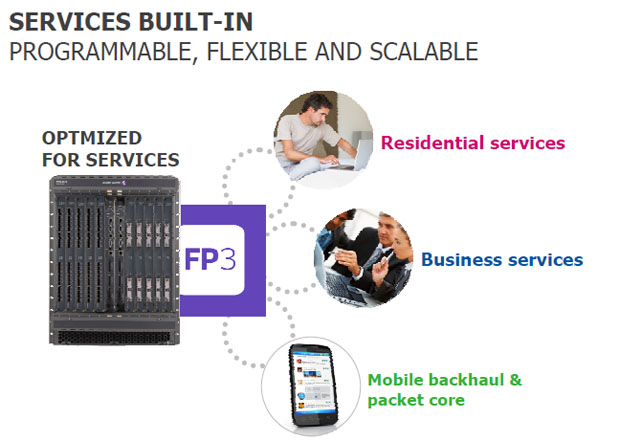Alcatel-Lucent unveils 400G network chip

Alcatel-Lucent overnight unveiled a network chip that gives the company a leg up on its networking technologies. The company announced its FP3 processor, which supports 400 gigabits per second (Gbps) transmission speeds.

(Credit: Alcatel-Lucent)
Today, the benchmark is 100Gbps, a rate that was standardised in 2010. Alcatel-Lucent said its FP3 processor will be in its 7750 router portfolio for carriers in 2012. The processors are likely to be in products in the middle of 2012, and demonstration units are working today.
Alcatel-Lucent's new processor opens the door for more bandwidth-intensive services, software and content. An FP3 processor could handle 70,000 simultaneous high-definition video streams.
In many respects, Alcatel-Lucent's new chip will future-proof its gear better. Lindsay Newell, head of product marketing for Alcatel-Lucent, said that the company has bet on developing its own processors as a differentiator. Indeed, the FP3 was the result of a three-year research and development effort. "As soon as our team finished the 100G processor in 2008, they immediately went to work on the 400G," said Newell.
He added that the engineering team behind the chip is based in Silicon Valley, and has developed three processors in the eight years together. "In the IP [Internet Protocol] market, there are a lot of commodity silicon vendors. We can use our intellectual property to our advantage," said Newell.
Among the key details of the industry’s first 400G network processor:
- it uses 100G line card designs;
- it was manufactured on 40-nanometre processes;
- FP-3 cards will be based on 2-port 100 GE, 6-port 40GE and 20-port 10GE configurations; and
- power consumption is cut by up to 50 per cent.
Via ZDNet US